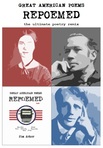A few days ago (July 9, 2012) I posted an entry about one of my favorite images from an Emily Dickinson poem. The image was from poem #1715, “Consulting summer’s clock,” and it has to do with the idea that "time flies when you're having fun." In that poem, Dickinson offered the paradox, “The second half of joy / Is shorter than the first.” Of course, how can the second half of anything be unequal to the first half? Yet Dickinson was spot on with her perceptive insight about the passage time.
That blog entry brought to mind other references to the passage of time in Emily Dickinson's poety, so I thought today I would list my “TOP TEN” – those images of time that I consider to be Dickinson's most effective and creative. Below are numbers 10 to 6, and in a day or two I’ll post my top 5.
10. The opening lines to #478:
I had no time to Hate –
Because
The Grave would hinder Me –
And Life was not so
Ample I
Could finish – Enmity –
This poem reminds me of one of my favorite quotes from Martin Luther King, Jr.: “I have decided to stick with love…Hate is too great a burden to bear.”
9. The combination of the sluggish and swift passage of time in #1120:
This slow Day moved along –
I heard its axles go
As if they could not hoist themselves
They hated motion so –
I told my soul to come –
It was no use to wait –
We went and played and came again
And it was out of sight –
It certainly is amazing how time can pass so quickly – even on what seems to be the “slowest” of days. In the blink of an eye, a day will pass – as will a month, a year, and a decade.
8. The “Wonderful Rotation” of the twelve months in #6:
Frequently the woods are pink –
Frequently are brown.
Frequently the hills undress
Behind my native town.
Oft a head is crested
I was wont to see –
And as oft a cranny
Where it used to be –
And the Earth – they tell me –
On it Axis turned!
Wonderful Rotation!
By but twelve performed!
I love how Dickinson depicts the change of seasons in the first four lines of the poem – especially with the use of personification of the hills “undressing.”
7. The paradox of time brought on by joy or loss in #1295:
Two Lengths has every Day –
Its absolute extent
And Area superior
By Hope or Horror lent –
Time is constant, so every day passes at the same rate as any other day – so every day has “its absolute extent.” However, the anticipation of some joy or an experience of some loss will seemingly deliver a second and different “length” to the day.
6. The beauty and the joy of the opening lines to #232:
The Sun – just touched the Morning –
The Morning – Happy thing –
Supposed the He had come to dwell –
And Life would all be Spring!
I love the beauty and the simplicity of the personification to signify the onset of another day.
In my “Top Ten” references to the passage of time in the works of Emily Dickinson, those are my picks for numbers 10 to 6. I’ll post my top five soon!
Do you have any favorites? I wonder if your top pick would match mine.
 newest »
newest »
 newest »
newest »
 Thanks - this is going straight to my FB page for Emily (I won't waste any time.) It's now up - you can see it at http://www.facebook.com/SecretLifeOfE... (all Emily lovers are welcome)
Thanks - this is going straight to my FB page for Emily (I won't waste any time.) It's now up - you can see it at http://www.facebook.com/SecretLifeOfE... (all Emily lovers are welcome)



